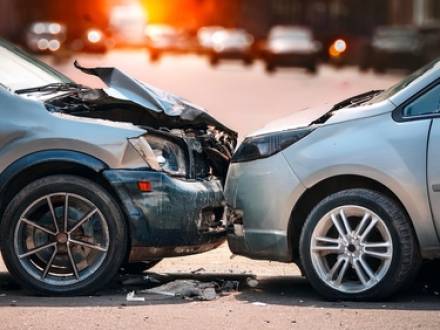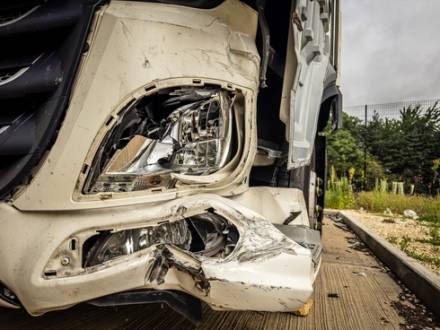Recent Blog Posts
How is the Value of a Car Crash Claim Estimated When You Need Ongoing Care?
 When a car accident leaves you with injuries so severe that multiple surgeries are required, estimating the value of your claim is not easy. Unlike a broken arm that heals with one procedure, serious injuries such as spinal cord damage, compound fractures, or traumatic brain injuries often involve surgeries spread out over months or years. The costs are ongoing, and the long-term impact on your life is hard to measure in advance.
When a car accident leaves you with injuries so severe that multiple surgeries are required, estimating the value of your claim is not easy. Unlike a broken arm that heals with one procedure, serious injuries such as spinal cord damage, compound fractures, or traumatic brain injuries often involve surgeries spread out over months or years. The costs are ongoing, and the long-term impact on your life is hard to measure in advance.
As of August 2025, California law continues to allow personal injury plaintiffs to seek damages for both current and future medical expenses, lost income, and pain and suffering. This is particularly important when injuries demand extensive care. Having a San Jose personal injury attorney on your side who is experienced, fearless, and ready to fight insurance companies will help ensure you get the full compensation you deserve, regardless of how much care you need.
Catastrophic Injury Claims Against Rideshare Companies for Passenger or Pedestrian Deaths
 As rideshare services like Uber and Lyft are an established part of everyday life throughout Santa Clara County, serious injuries and deaths in car accidents involving these companies are, unfortunately, very common. While most riders assume they are protected by commercial insurance, the truth is that liability in rideshare accidents can be far more complicated.
As rideshare services like Uber and Lyft are an established part of everyday life throughout Santa Clara County, serious injuries and deaths in car accidents involving these companies are, unfortunately, very common. While most riders assume they are protected by commercial insurance, the truth is that liability in rideshare accidents can be far more complicated.
If you have lost a loved one in a rideshare accident or suffered life-changing injuries as a passenger, pedestrian, or bystander, you may be entitled to substantial compensation. But to recover what you are owed, you will need to navigate layers of corporate protection, aggressive insurance tactics, and the evolving landscape of California rideshare law. Our San Jose personal injury attorney is here to help.
Can Bad Road Design Be the Cause of My Car Accident?
 While many car accidents are caused by driver error, some are the result of dangerous or poorly designed roads. A hidden hazard, like a sharp curve, missing signage, or inadequate lighting, can turn an otherwise safe drive into a serious crash.
While many car accidents are caused by driver error, some are the result of dangerous or poorly designed roads. A hidden hazard, like a sharp curve, missing signage, or inadequate lighting, can turn an otherwise safe drive into a serious crash.
When a poor road design contributes to an accident, the government agency responsible for the roadway may be legally responsible. In order to take action after a car crash that was caused by a badly designed road, it is essential to obtain quality legal representation. A San Jose, CA car accident lawyer can evaluate your case and help you understand your legal options in this unique situation.
What Counts as Poor Road Design?
Poor road design refers to the flaws in how a road was created or maintained that make it unsafe for drivers. These defects may not be obvious until a crash happens, but they can create dangerous conditions even when drivers act responsibly.
Why Are Underride Accidents So Dangerous in California?
 Few traffic accidents are as horrifying, or as deadly, as underride collisions. In a split second, a car can slide under the rear or side of a massive semi-truck, shearing off the top of the vehicle in the impact. Because the vehicle slides beneath the trailer, it often bypasses built-in safety features like crumple zones and airbags, leaving occupants vulnerable to catastrophic injuries or death.
Few traffic accidents are as horrifying, or as deadly, as underride collisions. In a split second, a car can slide under the rear or side of a massive semi-truck, shearing off the top of the vehicle in the impact. Because the vehicle slides beneath the trailer, it often bypasses built-in safety features like crumple zones and airbags, leaving occupants vulnerable to catastrophic injuries or death.
Underride accidents are a growing concern in California, as commercial trucks frequently travel alongside passenger vehicles on busy freeways and crowded city streets. Despite existing safety regulations, many trucks still lack the equipment needed to prevent these collisions. A South Bay area personal injury attorney can help victims and their families secure justice and compensation from negligent drivers, trucking companies, and manufacturers.
How Can I Prove a Drunk Driver Caused My Injuries?
 A car crash with a drunk driver can change everything in an instant. One careless decision by someone else can leave you facing a long road to recovery. From emergency medical treatment to missed work and lasting trauma, it can be overwhelming to figure out how to move forward.
A car crash with a drunk driver can change everything in an instant. One careless decision by someone else can leave you facing a long road to recovery. From emergency medical treatment to missed work and lasting trauma, it can be overwhelming to figure out how to move forward.
During this chaos, you deserve answers, accountability, and justice. Proving that the other driver was intoxicated is the first step in holding them responsible and pursuing the compensation you need to rebuild your life. A Santa Clara County, CA car accident attorney can help you gather the right evidence and understand your rights.
What Kind of Evidence Can Prove the Driver Was Intoxicated?
Proving that a driver was under the influence of alcohol at the time of the crash is key to crafting your personal injury case. Some of the strongest forms of evidence include:
Will the One-Bite Rule Apply to My California Dog Bite?
 A sudden dog attack can turn a normal day into a painful and frightening ordeal. Beyond the physical injuries and emotional trauma, victims are left with several questions: Who is responsible? Can the dog owner be held accountable? And does the so-called "one-bite rule" really mean the dog gets a free pass?
A sudden dog attack can turn a normal day into a painful and frightening ordeal. Beyond the physical injuries and emotional trauma, victims are left with several questions: Who is responsible? Can the dog owner be held accountable? And does the so-called "one-bite rule" really mean the dog gets a free pass?
These misconceptions can cloud the path to justice, especially in California, where the law is far more victim-focused than many people realize. If you have been harmed by a severe dog bite, a South Bay area personal injury lawyer can help you understand your rights under state law and take action to recover the compensation you deserve.
Does California Follow the One-Bite Rule?
The one-bite rule is a common law doctrine that is still used in some states. It essentially allows a dog "one free bite" before the owner is held legally responsible, assuming the owner had no prior knowledge of the dog’s aggressive behavior.
Can Motorcyclists File an Injury Claim After Lane Splitting?
 Lane splitting is a common sight on California highways. While it can help motorcyclists avoid traffic and shorten commute times, it is also very risky. When a crash happens during lane splitting, many riders may wonder: Can I still file an injury claim, or will I automatically be blamed for the accident?
Lane splitting is a common sight on California highways. While it can help motorcyclists avoid traffic and shorten commute times, it is also very risky. When a crash happens during lane splitting, many riders may wonder: Can I still file an injury claim, or will I automatically be blamed for the accident?
California’s unique stance on lane splitting means that injured motorcyclists may have a valid path to compensation. However, the outcome often depends on how the crash occurred and who was at fault. A Santa Clara County motorcycle accident lawyer can help riders assert their rights and build a strong case for financial recovery.
What Is Lane Splitting and Is It Legal in California?
Lane splitting refers to a motorcyclist who rides between lanes of slowed or stopped traffic. This practice is legal in California, the only state where it is explicitly permitted. However, just because lane splitting is legal does not guarantee that it is always safe or that other drivers will expect it.
Can You Sue an Uninsured Driver in California?
 A car crash is already a stressful experience, and it can become even more frustrating when you find out the driver who hit you has no insurance. As medical bills pile up and your car sits in the shop, you are likely to be left wondering who will pay for the damage. Unfortunately, this scenario is more common than you might think. California ranks among the top states for uninsured drivers, which creates serious challenges for those injured in car accidents.
A car crash is already a stressful experience, and it can become even more frustrating when you find out the driver who hit you has no insurance. As medical bills pile up and your car sits in the shop, you are likely to be left wondering who will pay for the damage. Unfortunately, this scenario is more common than you might think. California ranks among the top states for uninsured drivers, which creates serious challenges for those injured in car accidents.
If you are facing this situation, do not panic—there are still possible ways to secure compensation. A San Jose personal injury attorney can help you determine your legal options and fight for the fair outcome you deserve.
What Does California Law Require Regarding Insurance?
Under California Vehicle Code §16028, all drivers are legally required to carry proof of financial responsibility, typically in the form of liability insurance. The minimum required coverage includes:
5 Steps to Take After a Truck Accident in California
 Truck accidents can cause serious injuries and lead to long and stressful recovery periods. If you have been involved in a crash with a commercial truck in California, it is important to take the right steps to protect your health, your rights, and any future legal claim you may have. Knowing what to do in the hours and days after the accident can make a big difference. An experienced San Jose, CA personal injury lawyer can help you understand what compensation you could be eligible for and navigate the process of pursuing it.
Truck accidents can cause serious injuries and lead to long and stressful recovery periods. If you have been involved in a crash with a commercial truck in California, it is important to take the right steps to protect your health, your rights, and any future legal claim you may have. Knowing what to do in the hours and days after the accident can make a big difference. An experienced San Jose, CA personal injury lawyer can help you understand what compensation you could be eligible for and navigate the process of pursuing it.
Step 1: Call 911 and Seek Medical Attention
The first thing you should do after a collision with a truck is call 911. Even if you do not feel hurt, it is important to let medical professionals check you. Some injuries, like brain injuries or internal damage, may not be obvious right away. A medical record can also help later if you decide to file a personal injury claim.
How Can Technological Advancements Impact Personal Injury Claims?
 Technology has transformed how we live, travel, and communicate. It is also changing how personal injury accidents occur and how injury claims are pursued. As artificial intelligence (AI), self-driving cars, rideshare apps, and even delivery robots become part of everyday life, accident victims can face unfamiliar legal challenges. Determining fault, gathering evidence, and understanding insurance coverage can become more complicated when advanced technology is involved.
Technology has transformed how we live, travel, and communicate. It is also changing how personal injury accidents occur and how injury claims are pursued. As artificial intelligence (AI), self-driving cars, rideshare apps, and even delivery robots become part of everyday life, accident victims can face unfamiliar legal challenges. Determining fault, gathering evidence, and understanding insurance coverage can become more complicated when advanced technology is involved.
If you have suffered from injuries in an incident that involved these emerging technologies, speak with a knowledgeable California personal injury attorney who can answer questions about who is responsible and how you can get compensation.
What Influence Can Technology Have Over Personal Injury Cases?
Modern personal injury claims can involve a variety of technologies that did not exist before, that can introduce new legal considerations. For example:









